Elihu Burritt Library Helps Celebrate Chinese New Year
February 14, 2020
The Elihu Burritt Library is currently celebrating and representing the Chinese New Year with woodblock prints.
Woodblock printing is a common technique for printing in East Asia. It is seen as traditional folk art, and is used to decorate homes throughout China. It is displayed year-round, but you will most commonly see them during the New Year celebration.
Central borrowed woodblock prints from the Peach Blossom Valley of Suzhou Art & Design Technology institute in China, after the University of New Hampshire featured them earlier this year.
While Chinese New Year may have been on January 25 this year, the Elihu Burritt Library will display the prints until February 21.
Below are just a small portion of the prints on display, along with captions that were provided along with the art.
Golden Light Battalion Formation
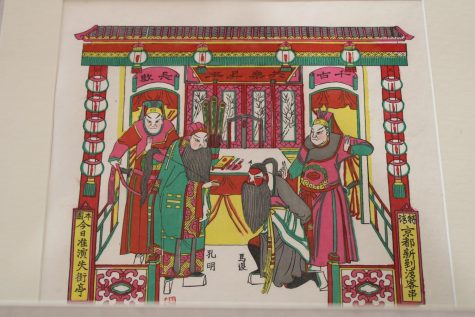
“Xue Dingshan, a general from the Tang Dynasty (7th century AD), had an adopted son fought alongside of Xue’s wife Fan Lihua, a fierce female warrior. After their son was killed in the Golden Light Battalion Formation, Xue suspected it was Fan who forced their son to fight, and the two argued over the death of their son. Fan swore to the gods that she was not responsible and finally Xue believed her. The couple sought revenge and eventually broke the battalion formation and won victory. The picture shows the couple fighting with the enemy general.”
The Fall of Jieting
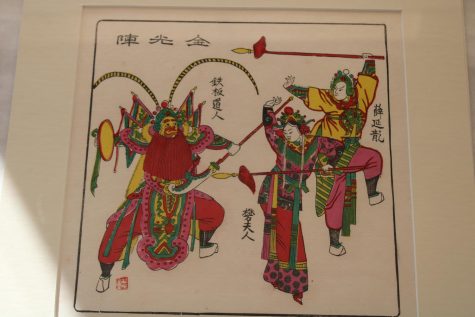
“The scene in this print is taken from ‘Romance of the Three Kingdoms.’ The town of Jieting, a crucial strategic point for the securing of supplies, was lost from Shu Kingdom control after a tactical error by the over-confident general Ma Su, who did not listen to advice from his supporting general. The print portrays the heartbreaking decision by the stategist Zhuge Liang, who praised Ma Su for his brilliance, to execute him for putting the vulnerable Shu army in a dangerous situation. This was done to prove that everyone was equal in military law, no matter the status.”
The Mouse Marries Off its Daughter to a Cat
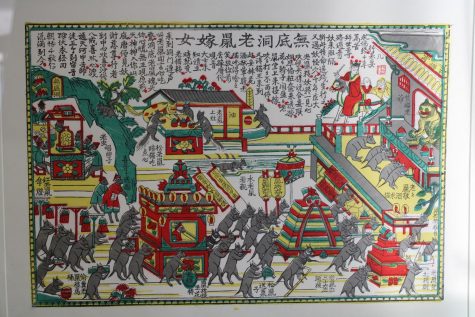
“The popular myth about a mouse in a bottomless cave trying to find a son-in-law or daughter-in-law is a common subject of woodblock prints. According to the myth, the mouse wanted his daughter to marry into money and power and considered a cat an ideal choice. Unfortunately, when the bride came to the cat’s palace, she became a meal before the wedding ceremony. Painted on the picture is a long procession marching towards the cat palace with a beautiful sedan chair in the middle. In the upper right are Xuanzang and his three disciples from ‘Journey to the West’ and in the upper left is the cave. In this Chinese classic, Xuanzang was also abducted by the Mouse Demon in the Bottomless Cave. He was finally rescued with the help from the cat deity.”
Ten Beauties Playing Ball
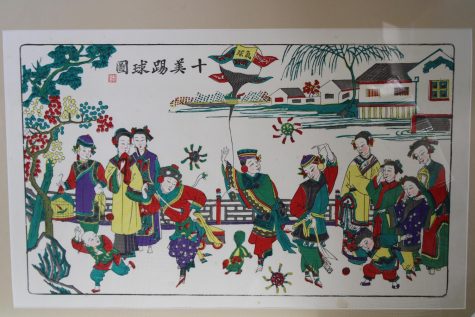
“The ball game originated in the Tang Dynasty as a sport of the imperial palace. According to records, emperorXizong was fond of both this ball game and cockfighting. Later, it gradually became widespread among commoners. This print features ten beautiful women playing. Around the 1100s, this ball took on the shape of a modern soccer ball. The size, shape and pattern of such a ball has not changed much since its invention in China hundreds of years ago.”
The Silkworm Breeder’s Cat Catching Rats
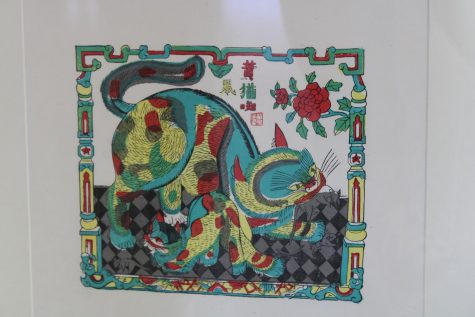
“China has a long history of silkworm breeding and silk weaving, with the lower Yangtze Valley as one of its most prolific silk-producing regions. Breeders hang this New Year print in hopes that their cats can catch all the rats (prey on silkworms), to ensure the prosperity of their production. According to old customs, tobacco smoke and other strong odors are forbidden in silkworm raising rooms, so strangers and pregnant women would halt at the sight of these prints on the door.”



